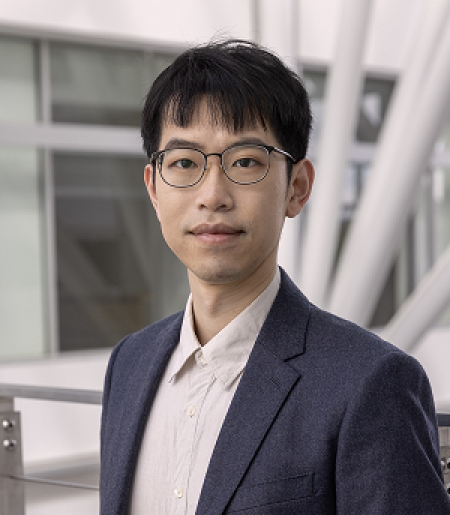Overview
In a quantum many-body system, even though the microscopic constituents (like electrons and spins) can be relatively simple, correlations and quantum entanglement can lead to the emergence of novel collective behaviors that are drastically different from the behavior of each individual constituent. Over the years, many examples of highly non-trivial collective behaviors have been discovered in 2d electron gas, cuprates, heavy-fermion materials, graphene, van der Waals heterostructures, and many other experimental systems. These discoveries have been motivating and driving a tremendous amount of progress in the theoretical understanding of how and what types of exotic collective behaviors can emerge following the basic rules of quantum mechanics. Our group is particularly interested in the theoretical study of the emergence of topological properties, exotic critical behaviors, highly entangled phases of matter, and universal dynamics in strongly-correlated quantum systems. We will pursue the development of new theoretical frameworks to characterize novel collective behaviors, as well as the construction of simple and amenable models to capture the essence of interesting phenomena observed in experiments.
Research Focus
My research interest lies in the theoretical study of strongly-correlated quantum many-body systems. Currently, the following topics are my main focus.
Exotic phases in quantum magnets:
Quantum magnetic systems form a fertile ground for both theoretical and experimental studies of exotic quantum phases of matter. I am particularly interested in a class of quantum magnetic phases, often referred to as spin liquids, that host exotic quasi-particle excitations whose quantum numbers and statistics take fractional values compared to the microscopic constituents of the system. Theoretical understandings of the inner working of such phases and of the signature of the emergent fractionalized excitation are crucial for the identification of these phases in experimental systems. Even though these exotic quantum phases with fractionalized excitations often emerge in strongly interacting quantum magnets, we can still use non-perturbative approaches to study their behavior. For example, some properties of the fractionalized excitations are fundamentally constrained by the spin and the crystal symmetries of the quantum magnets. Such constraints can sometimes have non-trivial implications for nearby phases and even for the whole phases diagram of the quantum magnet.
Strongly-interacting quantum critical points and gapless quantum matters:
Strong interactions can lead to many exotic quantum critical points and gapless quantum matters. At the same time, strong interactions often render standard approaches based on the perturbation theory ineffective, making it harder to tackle these critical points and gapless phases analytically. In some of these scenarios, non-perturbative approach methods are very helpful as they provide vital information about the universal behavior of the strongly-interacting quantum systems and sometimes even provide exact solutions to the problems. For example, dualities and quantum anomalies are useful tools to obtain universal properties of strongly-interacting quantum critical points in quantum magnets and in fractional quantum Hall systems. Dynamical mean-field theories can be applied to obtain the exact solutions of a large class of non-Fermi liquids, a type of gapless metallic states without any quasi-particles. I am generally interested in the development and the application of non-perturbative approaches to strongly-interacting quantum critical points and gapless quantum matters.
Entanglement Dynamics:
The dynamics of quantum entanglement is the key to the understanding of many important questions like how generic systems reach thermal equilibrium and how quantum information spreads under the unitary evolution of many-body systems. It has been found that quantum systems can enter different dynamical phases with different entanglement scaling. I am interested in developing the tools to understand the phase transitions between these different dynamical phases. I am also interested in the evolution of quantum entanglement in many-body systems that exhibit quantum chaos.
Graduate Students
Zhou Yang, Asad Bhuiyan
Professional Experience
- Graduate Fellow, Kavli Institute for Theoretical Physics, University of California, Santa Barbara, 2015.
- Moore Foundation Fellow, Kavli Institute for Theoretical Physics, University of California, Santa Barbara, 2016-2017 and 2018-2019.
- Postdoctoral researcher, Microsoft Station Q, 2017-2018 and 2019-2020.
- Assistant Professor, Physics, Cornell University, 2020-present.
Publications
- Chao-Ming Jian, Yi-Zhuang You, Romain Vasseur, and Andreas W.W. Ludwig, Measurement-induced criticality in random quantum circuits, Phys. Rev. B 101, 104302 (2020)
- Maissam Barkeshli, Parsa Bonderson, Meng Cheng, Chao-Ming Jian, and Kevin Walker, Reflection and time reversal symmetry enriched topological phases of matter: path integrals, non-orientable manifolds, and anomalies, Commun. Math. Phys 374, 1021 (2020)
- Xiao-Chuan Wu, Chao-Ming Jian, and Cenke Xu, Lattice models for non-Fermi liquids with tunable transport scalings, Phys. Rev. B 100, 075101(2019)
- Chao-Ming Jian and Cenke Xu, Interacting topological insulators with synthetic dimensions, Phys. Rev. X 8, 041030 (2018)
- Chao-Ming Jian, Alex Thomson, Alex Rasmussen, Zhen Bi, and Cenke Xu, Deconfined quantum critical point on the triangular lattice, Phys. Rev. B 97, 195115 (2018)
- Chao-Ming Jian, Zhen Bi, and Cenke Xu, Lieb-Schultz-Mattis theorem and its generalizations from the perspective of the symmetry-protected topological phase, Phys. Rev. B 97, 054412 (2018)
- Xue-Yang Song, Chao-Ming Jian, and Leon Balents, Strongly correlated metal built from sachdev-ye-kitaev models, Phys. Rev. Lett. 119, 216601(2017)
- Zhen Bi, Chao-Ming Jian, Yi-Zhuang You, Kelly Ann Pawlak, and Cenke Xu, Instability of the non-Fermi-liquid state of the Sachdev-Ye-Kitaev model, Phys. Rev. B 95, 205105 (2017)
- Chao-Ming Jian and Xiao-Liang Qi, Layer construction of 3D topological states and string braiding statistics, Phys. Rev. X 4, 041043 (2014)
- Maissam Barkeshli, Chao-Ming Jian, and Xiao-Liang Qi, Twist defects and projective non-Abelian braiding statistics, Phys. Rev. B 87, 045130 (2013)
